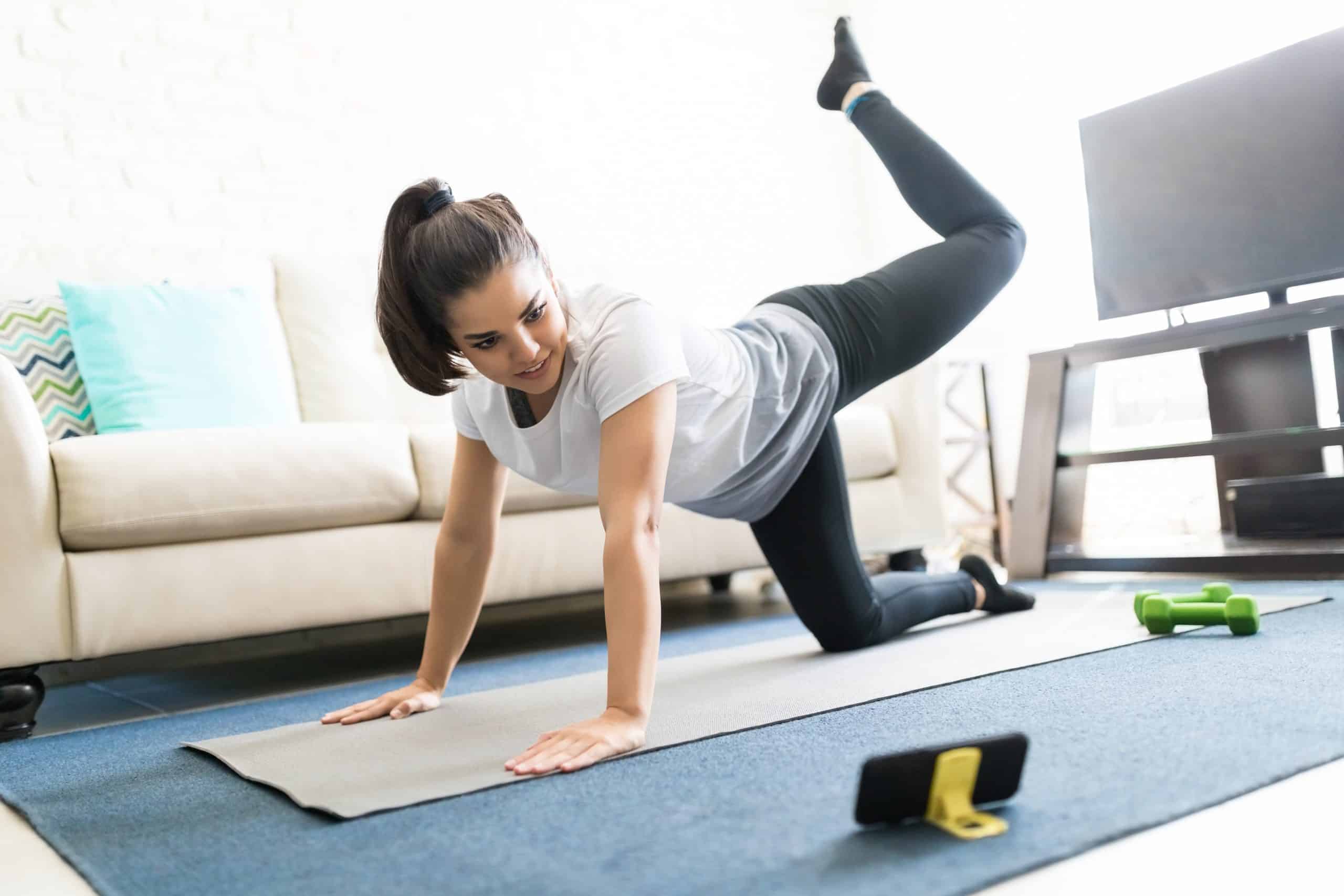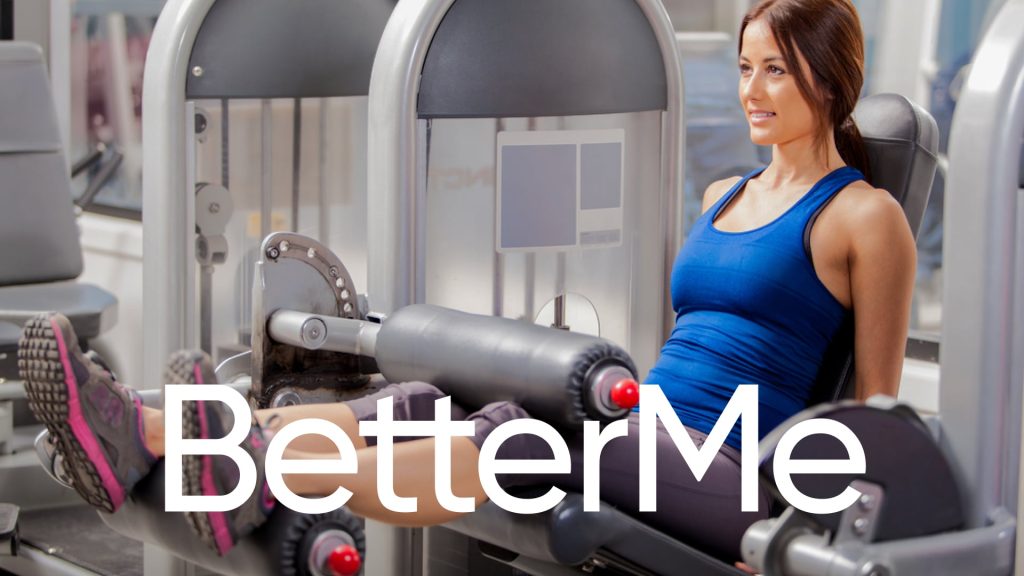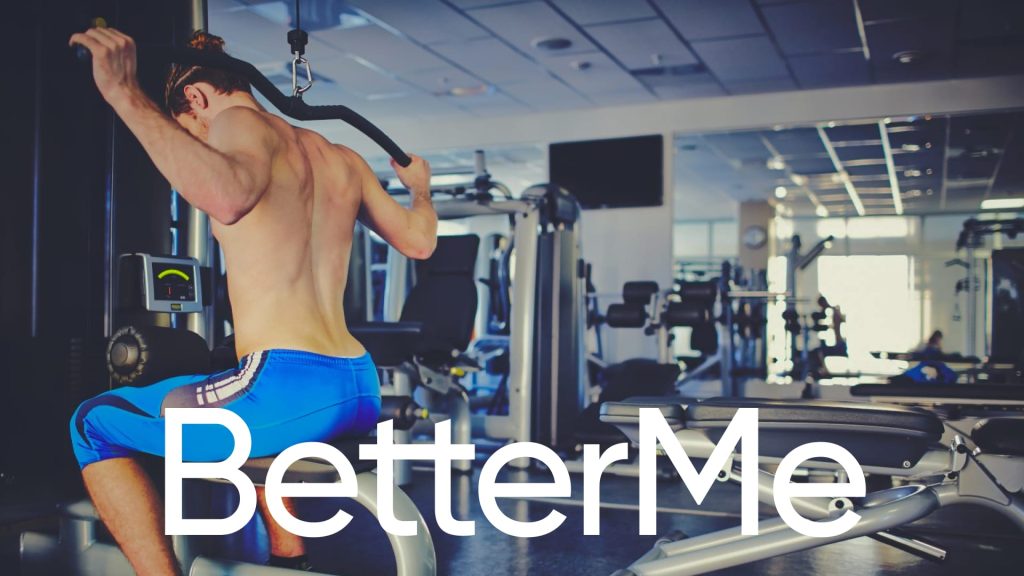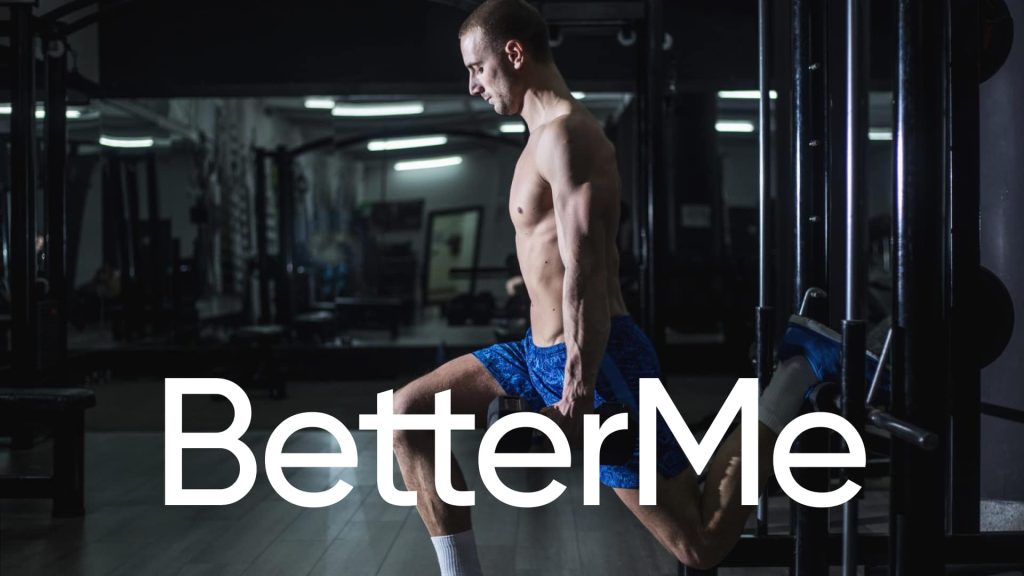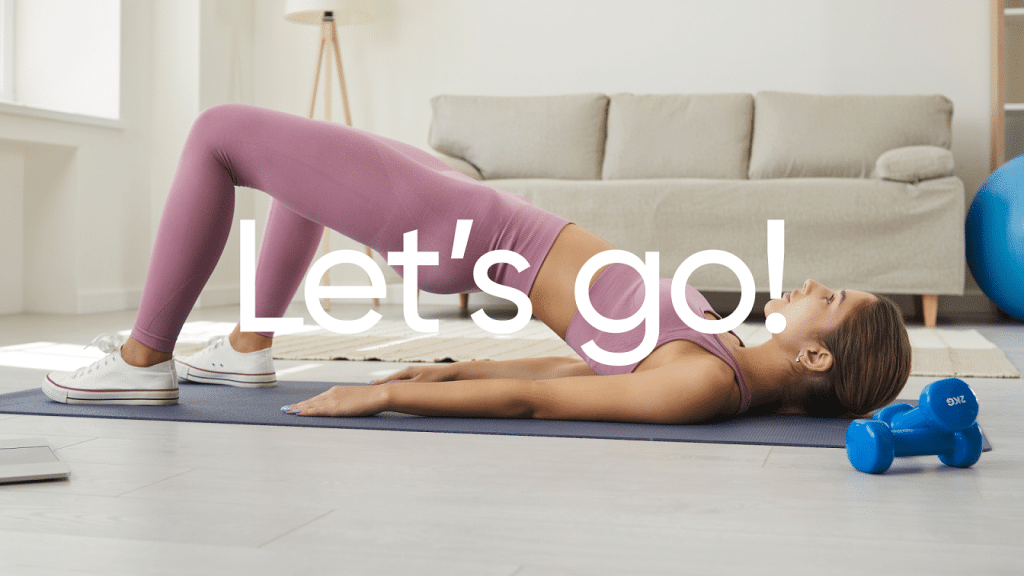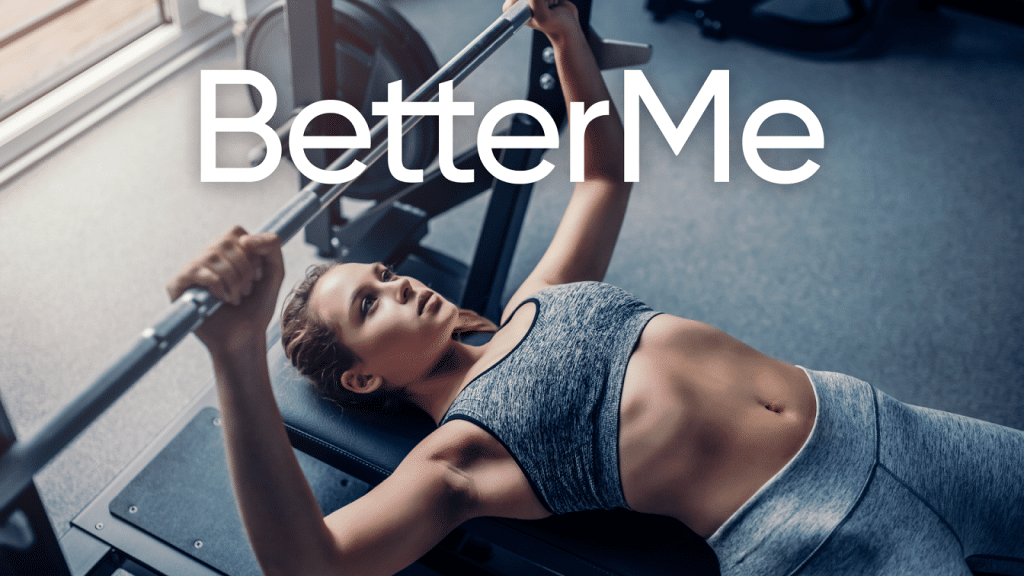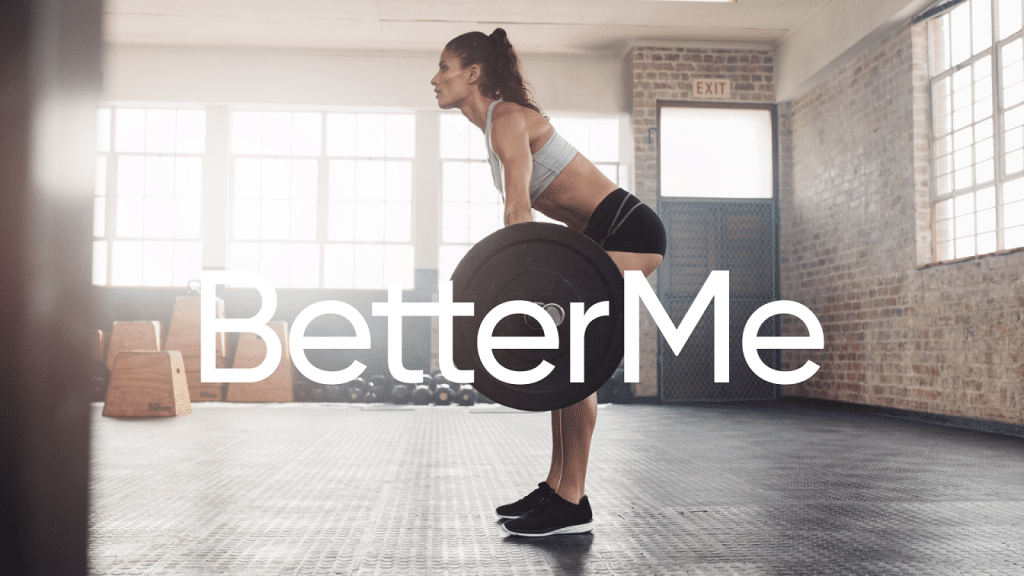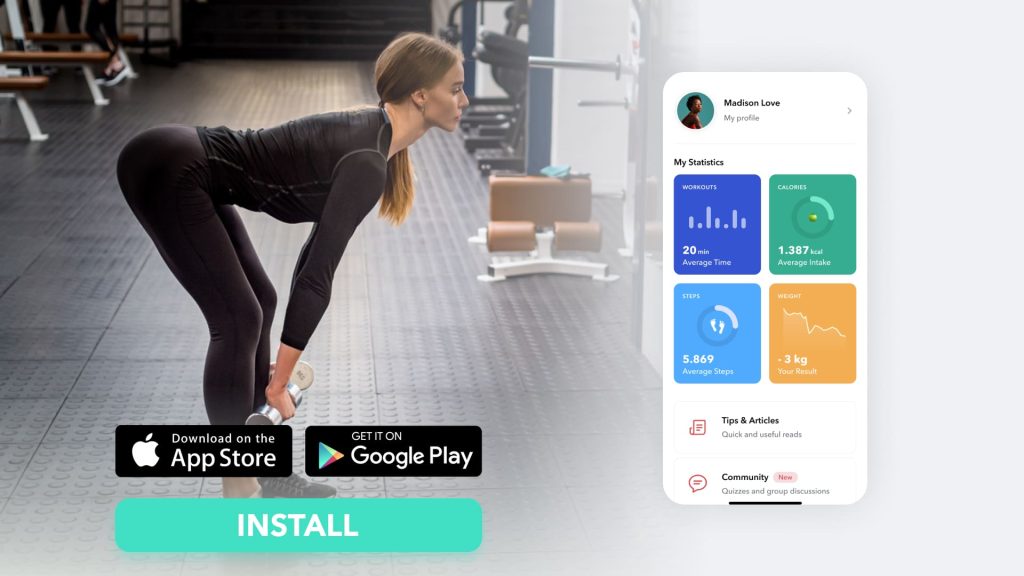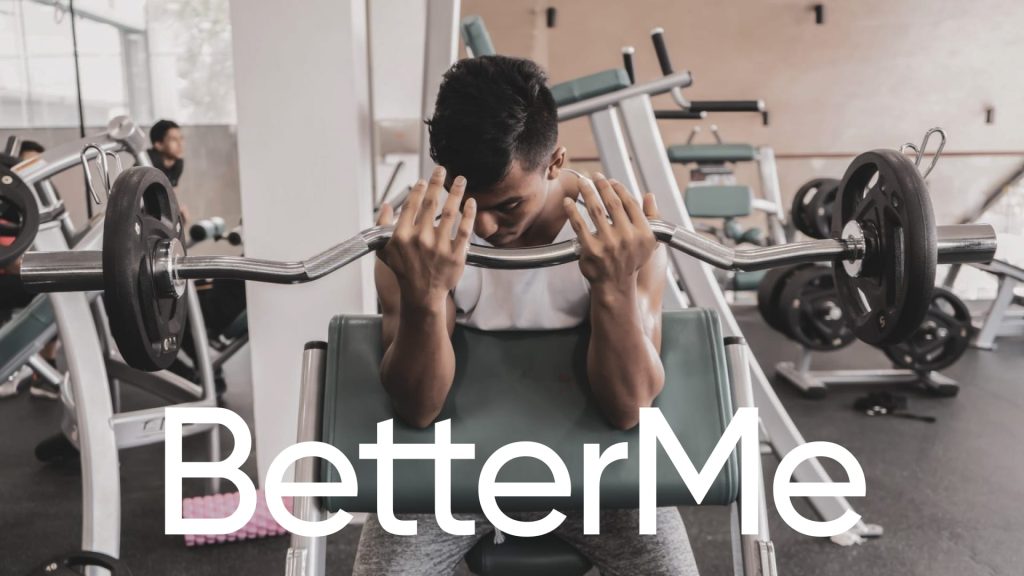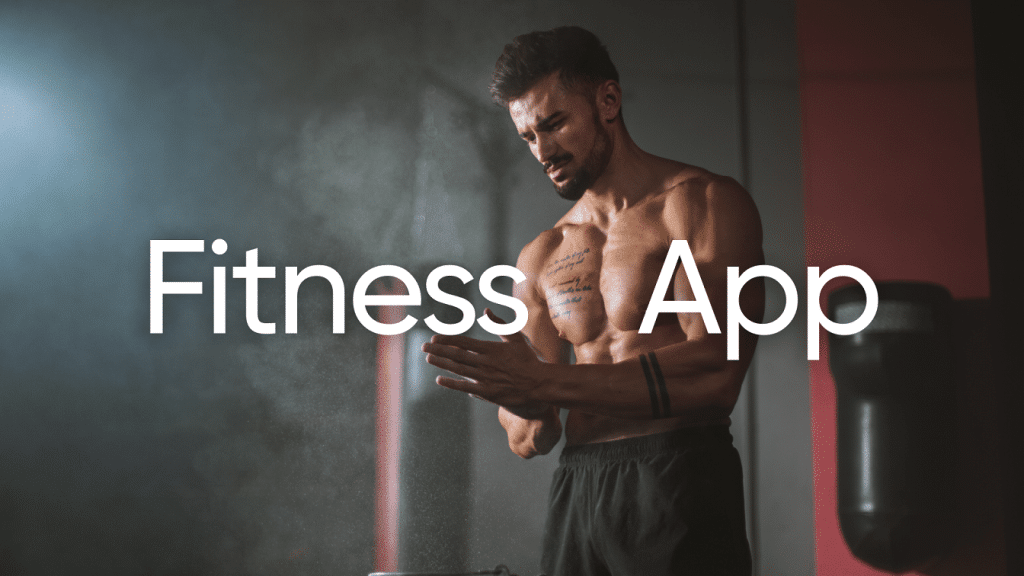How Many Exercises Per Muscle Group
Do you know that you have more than 650 muscles in your body (25)? But that number can go up to 840 if you count the muscles within complex muscles.
Considering the huge number of muscles in your body, how many exercises per muscle group should you do?
To answer that question, let’s start by analyzing the muscle groups.
Get your personalized
meal plan!
How Many Muscle Groups Are In The Human Body?
Fortunately, you don’t have hundreds of muscle groups in your body.
In fact, the National Cancer Institute of the U.S. Department of Health and Human Services identifies only four major muscle groups, including (19):
- first group: muscles of the head and neck
- second group: muscles of the trunk
- third group: muscles of the upper extremity
- fourth group: muscles of the lower extremity
This simplifies things significantly.
But for practical purposes in planning workouts, you can break it down further to 10 major muscle groups identified by The College Of Applied Health Sciences of the University Of Illinois and New Mexico State University (20, 22):
- pectorals
- latissimus dorsi
- trapezius
- quadriceps
- gluteals
- hamstrings
- deltoids
- triceps
- biceps
- abdominals
- calves
Read More: Ways To Exercise At Home: Going Full Throttle On Your Body Transformation Plans
How Many Exercises Per Muscle Group?
So, how many exercises per muscle group should you do?
Well, the scientific data shows that more exercises are better than less. Studies show that the volume of your workouts will impact your muscle mass (7). This means focusing on the number of exercises, repetitions, and sets.
To be more specific, you should train the major muscle groups at least twice a week.
Put more focus on the large muscle groups with two exercises per large muscle group as opposed to one exercise per smaller muscle group, during your workouts.
The American College of Sports Medicine goes further to recommend 8-10 multi-joint exercises per week, focusing on the major muscles. That’s at least two exercises per muscle group for the four major muscle groups identified by the National Cancer Institute of the U.S. Department of Health and Human Services, or one exercise per muscle group for the 10 major muscle groups identified by The College Of Applied Health Sciences of the University Of Illinois and New Mexico State University, in a week.
Now you know the required number of exercises.
What about the reps and sets?
For that, the American College of Sports Medicine also recommends 2-3 sets of 8-12 reps for each exercise in your workout (2). Since those are the minimum requirements, you can do more exercises, reps, and sets, based on your ability. However, you should have at least one or two rest days in a week, to avoid muscle overuse injuries (6).
How Many Exercises Per Muscle Group (Bodybuilding)?
In weight training, the number of sets and reps you do will depend on your fitness objective.
The NSCA’s Performance Training Journal provides these general guidelines, based on different fitness objectives (21):
- Strength: >85% 1RM (one rep maximum, or maximum weight you can lift for one rep) load, ≤6 repetitions, 2 – 6 sets, and 2 – 5 minutes rest between sets.
- Power (single-effort): 80 – 90% 1RM load, 1 – 2 reps, 3 – 5 sets, and 2 – 5 minutes rest between sets.
- Power (multiple-effort): 75 – 95% 1RM load, 3 – 5 reps, 3 – 5 sets, and 2 – 5 minutes rest between sets.
- Hypertrophy (bodybuilding): 67 – 85% 1RM load, 6 – 12 reps, 3 – 6 sets, and 30 seconds – 1.5 minutes rest between sets.
Based on those guidelines, here is a sample workout program for different exercises based on varying fitness goals:
- Deadlift: 75% 1RM load x 10 reps x 5 sets (bodybuilding), 90% 1RM load x 4 reps x 4 sets (strength), 75% 1RM load x 5 reps x 3 sets (power)
- Back squat: 75% 1RM load x 10 reps x 5 sets (bodybuilding), 90% 1RM load x 4 reps x 6 sets (strength), 75% 1RM load x 5 x 5 sets (power)
- Leg press: 67% 1RM load x 12 reps x 4 sets (bodybuilding), 90% 1RM load x 4 reps x 6 sets (strength)
- Hamstring curls: 67% 1RM load x 12 reps x 4 sets (bodybuilding), 85% 1RM load x 6 reps x 4 sets (strength)
- Quadriceps extension: 67% 1RM load x 12 reps x 4 sets (bodybuilding), 85% 1RM load x 6 reps x 4 sets (strength)
- Calf raise: 75% 1RM load x 10 reps x 6 sets (bodybuilding), 85% 1RM load x 6 reps x 6 sets (strength)
- Snatch: 80% 1RM load x 3 reps x 4 sets (power)
- Clean: 80% 1RM load x 3 reps x 4 sets (power)
- Bench press: 75% 1RM load x 10 reps x 4 sets (bodybuilding), 90% 1RM load x 4 reps x 6 sets (strength), 75% 1RM load x 5 reps x 5 sets (power)
- Bent-over row: 75% 1RM load x 10 reps x 4 sets (bodybuilding), 90% 1RM load x 4 reps x 6 sets (strength)
- Overhead press: 67% 1RM load x 12 reps x 3 sets (bodybuilding), 85% 1RM load x 6 reps x 5 sets (strength)
- Lat. pull-down: 67% 1RM load x 12 reps x 3 sets (bodybuilding), 85% 1RM load x 6 reps x 5 sets (strength)
- Triceps: 67% 1RM load x 12 reps x 4 sets (bodybuilding), 90% 1RM load x 6 reps x 4 sets (strength)
- Biceps: 67% 1RM load x 12 reps x 4 sets (bodybuilding), 90% 1RM load x 6 reps x 4 sets (strength)
- Push jerk: 80% 1RM load x 3 reps x 5 sets (power)
- Wrist curl: 67% 1RM load x 12 reps x 3 sets (bodybuilding), 85% 1RM load x 6 reps x 2 sets (strength)
How Many Exercises Per Muscle Group (Weight Loss)?
For weight loss, the issue isn’t as complex as bodybuilding.
In weight loss, you can manage to activate most muscles together through wholesome aerobic exercises that work nearly all muscles. Such activities include swimming and aerobics. Therefore, you don’t have to worry too much about the number of exercises per muscle group.
Instead, what matters is the duration of the activity.
In that regard, the U.S. Department of Health & Human Services recommends at least 150 minutes of moderate intensity activity per week for 18-64 year-old adults (17). This can be as simple as brisk walking.
But you can also build muscle endurance through weight training. In this case, target loads lighter than 67% 1RM with more than 12 reps, and very short rests between sets.
How Many Exercises Per Muscle Group For Beginners/ Pros?
Understandably, beginners can’t do as many exercises as experienced bodybuilders.
For a beginner, it would be reasonable to do a full-body workout (one exercise for each muscle group) during each workout session.
That answers the question, “How many exercises per muscle group for beginners?”
But what about the question, “How many exercises per muscle group for advanced bodybuilders?”
Well, an upper-body/lower-body split would serve you well as an experienced bodybuilder. This allows you to perform more exercises for each muscle group during each workout session. In one session, you’ll focus on the upper body and then the lower body in the next session.
How Many Exercises Per Muscle Group For Different Ages And Genders?
Obviously, the number of exercises you can do will also vary based on your age and gender.
So, how many exercises per muscle group for an 18-64 year old woman or man?
And, how many exercises per muscle group for a 65+ year old man or woman?
Well, you may not find a clear recommendation on the exact number of exercises to do based on your age and gender, since people have varying physical capacities even within each age or gender group. That’s why the Physical Activity Guidelines for Americans does not give a specific number of exercises (8).
So, how do you know that you’ve exercised enough?
The general rule is to perform muscle-strengthening exercises to the point when you cannot do any more repetitions. As long as you schedule those workouts for at least 2 days per week, you’ll be fine.
Remember, even a mere 5 minutes of physical activity will give you real health benefits.
Lean and toned up body isn’t just a far-fetched fantasy. Check out the BetterMe app and watch it propel your weight loss journey into high gear!
How Many Different Exercises Per Muscle Group?
The question, “How many exercises per muscle group per day?” cannot be fully answered without addressing exercise variations.
In order to fully build your muscles, you’ll need to incorporate multiple variations of exercises for each muscle group. Each variation can activate the muscle group in different ways (24). Besides, a muscle group can have more than one mode of action (abduction, flexion, extension etc.), which necessitates different exercise variations (15).
This means you may need more than one exercise for each muscle group per day.
The following is an evaluation of multiple exercise variations for each muscle group. It can help you answer the question, “If I work 1 muscle group per day, how many exercises per muscle group?” It will show you the number of exercise variations necessary to fully activate each muscle group.
Pectorals Exercise Variations
Exercise variations for the pectorals are based on the upper, middle, and lower chest (the location of the pectorals).
Upper Chest:
The muscles in your upper chest point towards your clavicle, from your armpits.
One exercise that targets this area is the incline bench press (11):
- Lie on your back along an incline bench reclined at a 30-45 degree angle.
- Hold a barbell over your chest using an overhand grip, with hands shoulder-width apart.
- Extend your arms up straight and lower them back down slowly.
Middle Chest:
Lifting at a 90-degree angle from your body will target the middle chest.
A flat bench press does this effectively (3):
- Lie on your back along a flat bench.
- Hold the barbell above your chest using an overhand grip with hands shoulder-width apart.
- Start with your arms fully extended, then lower and lift the bar slowly.
Lower Chest:
Targeting this part can be tricky, but you can do it using an incline push up (12):
- Place your hands slightly wider than shoulder width on an elevated platform for the push-up.
- Start with arms straight and slowly lower your body before pushing back up.
Various other exercises to try out for your pectorals include: parallel bar dips, decline dumbbell bench press, decline dumbbell flyes, cable flyes / cable crossover, dumbbell pullover, low-incline barbell bench press, and seated machine chest press.
Read More: How To Get Rid Of Chest Fat-The Most Effective Fat Burning Exercises
Latissimus Dorsi Exercise Variations
The exercise variations here target the upper/outer lats and the lower lats.
Upper/Outer Lats:
The upper/outer lats form the typical V-taper of your torso.
A useful exercise to target this section is the pull-up (wide grip) (26):
- Keep your hands shoulder-width apart and palms facing away from your body as you grab a pull-up bar.
- Start with arms extended and pull your body up until your chin passes the bar and lower yourself back down slowly.
Lower Lats:
Exercises that use a reverse and close grip will target the lower lats effectively.
One exercise is the reverse-grip pull-down (18):
- Grab a straight-bar attachment with palms facing your body and shoulder-width apart.
- Start with arms extended and pull your elbows down until the bar reaches your chest before slowly returning it back up.
Various other exercises to try out for your lats include: barbell row, deadlifts, dumbbell row, chin-ups, pull-ups, lat pulldowns, dumbbell pullover, landmine row, meadows row, inverted bodyweight row, renegade row, and deadstop row.
Trapezius Exercise Variations
The trapezius is a broad muscle on the back part of your neck and trunk. Exercise variations target either the upper and middle traps or the back and lower traps.
Upper And Middle Traps:
A useful exercise here is the Gittleson Shrug (16):
- Sit up straight on a flat bench with one hand behind you on the bench and the other hand holding a dumbbell.
- Start with your head tilted toward the supporting shoulder and elevate your moving shoulder while tilting your head towards it.
Back And Lower Traps:
Target this section using a barbell deadlift (4):
- Use an overhand grip with hands nearly twice your shoulder-width apart to hold a barbell.
- Start while standing straight and lower the barbell slowly without rounding your back, then stand back up while thrusting your hips forward.
Quadriceps Exercise Variations
The quadriceps is made up of four muscles, which necessitates four exercise variations.
Vastus Medialis:
Also called the teardrop muscle, this muscle is located on the front of your thigh.
An effective exercise to exert this muscle is the dumbbell lunge (5):
- Stand while holding two dumbbells with palms facing each other and your feet shoulder-width apart.
- Keep your arms extended and take a large step with one leg while lowering the rear knee and keeping the front shin vertical.
Vastus Lateralis:
This is the most prominent section of our quads, extending down your thigh’s lateral side.
Your workout stance can influence the impact on this muscle (10). One workout that achieves that is the close-stance front squat:
- Sit a barbell on your shoulders and hold it while standing with feet less than shoulder-width apart.
- Bend your knees and push your hips back until your hips are parallel with the floor.
Rectus Femoris:
Exercises that work both your knee and hip will effectively target this section located in the middle of your thigh (14).
One exercise is the straight leg raise (9):
- Lie on your back, keeping your legs together and straight.
- Lift your legs up until your butt lifts off the floor, and then take them back down.
Vastus Intermedius:
This section is located on the front part of your upper leg, between the vastus lateralis and vastus medialis.
An effective exercise here is the squat:
- Stand tall with feet shoulder-width apart and arms in front at chest height.
- Drop your hips until your thighs are parallel with the floor, and then push back up.
Gluteal Exercise Variations
The gluteal is made up of three muscles forming the buttocks. Therefore, you need at least three exercise variations to target each muscle.
Gluteus Maximus:
This is one of the largest muscles in your body and the biggest of the gluteals.
To target this muscle, use the single-leg Romanian deadlift with dumbbell:
- Hold two dumbbells with an overhand grip while standing on one leg.
- Lower your torso by hinging at your hips, before pushing back up.
Gluteus Medius:
This muscle provides abduction, internal/ external rotation of your hip, and stabilization of hip/ pelvis.
Activate the muscle using monster walks (1):
- Wrap a resistance loop band around your lower legs while in a quarter-squat position.
- Step diagonally forward and then back to the start.
Gluteus Minimus:
This muscle is a hip abductor and it’s important for hip stabilization.
To work it out, use a dumbbell crossover lunge:
- Hold two dumbbells with palms facing each other and stand with feet shoulder-width apart.
- Take a large step back, crossing it behind the other leg and bending the back knee to the ground while keeping the front shin vertical.
Hamstrings Exercise Variations
The hamstring muscle, located behind your thigh, is made up of three muscles: semitendinosus, semimembranosus, and biceps femoris. Therefore, you need at least three exercise variations to target each muscle.
Semitendinosus:
This is the longest hamstring muscle that provides knee flexion, fistula rotation, and thigh extension.
To target this muscles, try out the glute ham raise (13):
- Position yourself in a GHD (glutes-hamstring developer) machine with hips extended, upright torso, and knees bent.
- Keep your hips extended as you straighten your legs, and then pull yourself back.
Semimembranosus:
Unlike the biceps femoris which comprises the lateral hamstrings, the semimembranosus combines with the semitendinosus to comprise the medial hamstrings.
To target this muscle, use leg curls:
- Lie face down on the leg curl machine and grasp the handles on the front.
- Curl your lower legs without lifting your things and then extend them.
Biceps Femoris:
This muscle serves the function of knee flexion/ external rotation/ internal rotation and hip extension.
A good exercise to activate the muscle is the good morning:
- Stand with your feet shoulder-width apart and your hands behind your head.
- Bend at the hip until your back is nearly parallel to the floor.
Looking for a way to break the vicious cycle of weight loss and tone up all the jiggly parts? Watch the extra pounds fly off and your muscles firm up with the BetterMe app!
Deltoids Exercise Variations
This shoulder muscle requires three exercise variations to target the three groups of fibers that it has.
Anterior Deltoid:
The primary function of this muscle is shoulder abduction, as well as shoulder internal rotation, flexion, and transverse flexion.
A useful exercise here is the Arnold press:
- Grab two dumbbells at shoulder height with bent arms and palms facing your body.
- Press the dumbbells overhead while rotating your palms until they face forward.
Lateral Deltoid:
This muscle is activated in almost all shoulder exercises.
One exercise is the barbell shoulder press:
- Hold a barbell on your chest using an overhand grip with arms bent.
- Press the barbell overhead and then back down.
Posterior Deltoid:
This muscle provides shoulder transverse abduction, extension, transverse extension, and external rotation.
To target the muscle, use a one-arm bent-over row:
- Grab one dumbbell and stand with one foot forward while your torso is bent over nearly parallel to the ground.
- Lift the dumbbell while keeping your elbow close to your body, and then take it back down.
Triceps Exercise Variations
As the name suggests, the triceps brachii contains three muscles. Therefore, you need at least three exercise variations to target each muscle.
Medial Head Triceps:
This is the least visible of the three triceps muscles and it’s greatly activated when you perform elbow extensions at 90 – 180 degrees of shoulder elevations (23).
One exercise that achieves this is the overhead dumbbell triceps extension:
- Hold two dumbbells overhead with palms facing each other while standing.
- Start with arms extended and bend your elbows lowering the dumbbells behind you until your forearms are parallel with the floor.
Lateral Head Triceps:
This is the most visible section from the side of your arm.
To target this muscle, use the body-weight dip:
- Grab the handles of a dip station and lift your body to fully extend your arms and body.
- Bend your elbows to lower your body until your upper arms are parallel with the ground.
Long Head Triceps:
Located behind your arm, this muscle gives most of the overall mass of your triceps.
To workout this muscle, use the dumbbell kickback:
- Place your left hand and left knee on a weight bench in a bent-over posture.
- Grab a dumbbell using your right hand with an overhand grip and keep your upper arm parallel to the ground.
- Extend your forearm and bring it back down.
Biceps Exercise Variations
The “short head” and “long head” of the bicep form a single muscle. Therefore, you need at least two exercise variations to target each muscle.
Short Head Bicep:
Located on your inner arm, the short head adds width to your flex, unlike the long head which creates the muscle peak.
An effective workout for this muscle is the EZ-bar preacher curl:
- Sit on a preacher bench while holding an EZ-bar using an underhand grip with your upper arm resting on the padding.
- Start with arms extended and bend your arms then lower the bar back down.
Long Head Bicep:
This section runs along the outside of your upper arm.
To target the long head bicep, use a standing dumbbell biceps curl:
- Grab two dumbbells while standing with your palms facing forward.
- Don’t move your upper arms as you bend your elbows to curl the dumbbells.
Abdominals Exercise Variations
There are four main abdominal muscles which cover your internal organs. Therefore, you need at least four exercise variations to target each muscle.
Transversus Abdominis:
This is the deepest muscle layer which stabilizes your trunk and maintains internal abdominal pressure.
To target this muscle, use the plank:
- Place your extended arms on the floor beneath your shoulders and keep your legs extended.
- Keep your torso straight aligned with your legs and hold that position.
Rectus Abdominis:
This muscle is located between your ribs and pubic bone. It creates the characteristic bulges commonly called ‘the six pack.’ The main function is to move your body between the pelvis and ribcage.
A good workout for this muscle is the cable crunch:
- Kneel under a rope attached to a high pulley cable machine and hold the two rope ends on either side of your face.
- Bend over at your waist and slowly extend back to the start.
External Oblique Muscles:
Found on each side of your rectus abdominis, the external oblique muscles allow your trunk to twist. When the right external obliques contract, your body turns to the left, and when the left external obliques contract, your body turns to the right.
A good exercise for this muscle is the bicycle crunch:
- Lie on your back keeping your knees bent and hands behind your head.
- While raising your shoulder blades, pedal your legs in the air like riding a bicycle.
Internal Oblique Muscles:
The internal oblique muscle is located just inside your hip bones.
This muscle operates in an opposite direction to your external oblique muscles. To twist your trunk to the left, the left internal oblique and the right external oblique contract together. To twist your trunk to the right, the right internal oblique and the left external oblique contract together.
A good exercise for this muscle is the side plank:
- Start in a plank position, then rotate your body to your right and stack your feet on each other.
- Extend your right arm to the ceiling and return to the plank position.
Calves Exercise Variations
The calf muscle is made up of two muscles: the soleus muscle and the gastrocnemius muscle. Therefore, you need at least two exercise variations to target each muscle.
Soleus Calf Muscle:
This is the smaller, flat muscle lying underneath the gastrocnemius calf muscle. It lifts your heel when your knee is bent, and also controls ankle and knee movement.
A good exercise to target this muscle is the seated calf raise:
- Sit on a bench with your feet flat on the ground.
- Lift your heels/ flex your calves and then return them back down.
Gastrocnemius Calf Muscle:
This is the larger calf muscle which forms the visible bulge beneath your skin. You use this muscle when stepping forward, running, stepping up, and lifting onto the balls of your feet. The muscle functions through plantar flexion of your ankle and bending your knee.
To exert this muscle use the standing calf raise:
- Stand with your midfoot and heels hanging from the edge of a step/ box and hold on to a rail to stay balanced.
- Lift your heels up and then lower them back down to the start.
Conclusion
Based on this extensive guide, you can determine how many exercises per muscle group you need.
You can now properly plan a safe and effective workout that suits your gender, age, fitness goals, and physical capacity. Most importantly, you’ll have a well-rounded workout that fully exerts all the muscle groups in your body.
DISCLAIMER:
This article is intended for general informational purposes only and does not address individual circumstances. It is not a substitute for professional advice or help and should not be relied on to make decisions of any kind. Any action you take upon the information presented in this article is strictly at your own risk and responsibility!
SOURCES:
- 6 Glute Med Exercises (2018, acefitness.org)
- ACSM Guidelines for Strength Training (2019, acsm.org)
- Barbell Bench Press (n.d., msn.com)
- Barbell Deadlift (n.d., msn.com)
- Dumbbell Lunge (n.d., msn.com)
- Effects of frequency and duration of training on attrition and incidence of injury (1977, pubmed.ncbi.nlm.nih.gov)
- Effects of Resistance Training Frequency on Measures of Muscle Hypertrophy: A Systematic Review and Meta-Analysis (2016, researchgate.net)
- Executive Summary: Physical Activity Guidelines for Americans 2nd edition (n.d., health.gov)
- How to Do Leg Raises (n.d., nytimes.com)
- How to squat? Effects of various stance widths, foot placement angles and level of experience on knee, hip and trunk motion and loading (2018, ncbi.nlm.nih.gov)
- Incline Barbell Bench Press (n.d., msn.com)
- Incline Pushup (n.d., msn.com)
- Muscle activation during various hamstring exercises (2014, pubmed.ncbi.nlm.nih.gov)
- Muscle activities of the rectus abdominis and rectus femoris and their ratio during leg raises performed by healthy adults (2015, ncbi.nlm.nih.gov)
- Muscle Groups (n.d., training.seer.cancer.gov)
- One Arm Shrugs for Bigger Traps – Gittleson Shrug tutorial (2011, youtube.com)
- Physical Activity Recommendations for Different Age Groups (2020, cdc.gov)
- Reverse-grip Pulldown (n.d., msn.com)
- Review: Introduction to the Muscular System (n.d., training.seer.cancer.gov)
- Skeletal Muscle Groups Front and Back (n.d., cdn.citl.illinois.edu)
- Strength, Size, or Power? (n.d., myweb.facstaff.wwu.edu)
- The Benefits of Strength Training and Tips for Getting Started (2017, aces.nmsu.edu)
- The different role of each head of the triceps brachii muscle in elbow extension (2018, ncbi.nlm.nih.gov)
- Variations in muscle activation levels during traditional latissimus dorsi weight training exercises: An experimental study. (2004, ncbi.nlm.nih.gov)
- What is the strongest muscle in the human body? (n.d., loc.gov)
- Wide-grip Pullup (n.d., msn.com)
